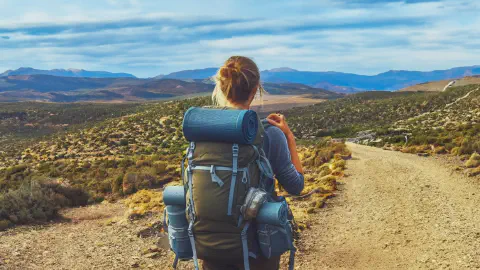
Camino del Norte Itinerary: Your Guide to the Northern Way
Posted: | Updated:
Reading time: 29 minutes
Camino del Norte Itinerary: Your Guide to the Northern Way
Posted: | Updated:
Reading time: 29 minutes
By: Simon Kemp, Editor
The Camino del Norte, also known as the Northern Way or the Way by the Coast, is one of the oldest routes of the Camino de Santiago , a pilgrimage to the tomb of the Apostle Saint James the Great in Santiago de Compostela.
Use this page to help plan your own Camino del Norte Itinerary, check the route maps or decide which albergues to book. If you plan to go sometime in the future, then learn something about this wonderful Coastal Camino right here before you take the plunge and decide to go.
This coastal route dates back to the 9th century, when it was one of the safest and most popular ways to reach Santiago, as most of the Iberian Peninsula was under Muslim rule.
The route starts in Irún, a town in the Basque Country, and follows the northern coast of Spain, passing through scenic landscapes, historic towns and cultural landmarks. The route joins the Original Way (el Camino Primitivo) in Oviedo, the capital of Asturias, and continues to Santiago de Compostela.
Camino del Norte Route Map and Stages
Planning Your Camino del Norte Itinerary
I have included a Camino del Norte route map at the top of each section. Each map covers that specific section as this makes it easier to plan your personal itinerary. You can save these Camino route maps to your own Google Maps favorites.
1. Best Time to Go
The ideal time to embark on the del Norte is from late spring to early autumn, particularly between May and September. During these months, the weather is predominantly pleasant, with warmer temperatures and less rainfall, ensuring a comfortable trek. However, July and August can be quite busy, as these are peak tourist months. For a more solitary experience, consider May, June, or September.
2. How Many Days do you Need for the Camino del Norte?
With a total distance of about 825 kilometers. The number of days you need to complete it depends on your fitness level, your pace, and how much time you want to spend exploring the towns and attractions along the way.
A typical walker can cover between 20 and 30 kilometers per day, which means it would take about 28 to 42 days to finish the whole route.
However, some people may prefer to walk faster or slower, or take more or fewer rest days. Therefore, it is advisable to plan your Del Norte itinerary according to your personal preferences and abilities, and leave some room for flexibility and spontaneity.
3. What to Pack
Packing light is key. Essentials include:
- Comfortable walking shoes: Invest in high-quality, durable, and waterproof hiking boots.
- Backpack: A 30-40 liter backpack with good support.
- Clothing: Breathable and moisture-wicking attire, a waterproof jacket, and layers for varying temperatures.
- Accessories: Hat, sunglasses, and sunscreen for protection against the sun.
- Tech: A smartphone with GPS and a portable charger.
- Health: Basic first aid kit, blister plasters, and personal medications.
4. Accommodation
Accommodations along the Camino range from traditional pilgrim hostels, known as albergues, to hotels and guesthouses. Albergues offer a communal experience and are budget-friendly, typically costing between 5 to 15 euros per night. Hotels and guesthouses provide more privacy and comfort, with prices varying widely depending on the location and amenities.
5. Budgeting
Budgeting for the Camino is highly personal and depends on your choice of accommodations, dining preferences, and other expenses. On average, pilgrims spend about 30 to 40 euros per day. This includes accommodation, meals, and occasional treats.


Camino del Norte Stages
I have separated each a stage of the Northern Way into 5 distinct parts or segments. Each segment has it’s own character and level of difficulty and each part of the Northern Way is a mini-Camino on it’s own right.
Be cautious though, because some parts of this del Norte route are not for the faint of heart.
These parts or segments are further divided into stages or days. These are the traditioal stages of the del Norte because each one can typically be covered in one day. Most peope refer to these as ‘stages’.
Part 1: Starting Your Journey – Irun to Bilbao
The first section of this stage starts in the Basque town of Irun, near the border with France, and follows the coast until reaching the city of Bilbao, famous for its Guggenheim Museum and its gastronomy.
Along the way, you will enjoy stunning views of the Cantabrian Sea, walk through charming fishing villages and historical cities, and discover the rich culture and heritage of this region.
This section covers about 140 kilometers and can be completed in 7 to 9 days, depending on your pace and preferences. It is a moderately challenging route, with some steep ascents and descents, but also plenty of flat sections and alternative paths.
Camino del Norte Part 1 Route Map
Day 1 - Stage 1: Irun to San Sebastián (24 km)
Embarking on this coastal route, you begin your Camino in the border town of Irun on day 1: Irun to San Sebastián . The first day is a blend of urban and rural landscapes, leading to the stunning coastal city of San Sebastián. Famous for its culinary scene, don’t miss the chance to try pintxos (Basque tapas) in the Old Town. Accommodation options are plentiful, ranging from budget albergues to luxury hotels.
Day 2 - Stage 2: San Sebastián to Zarautz (22 km)
Journey along the coastline with breathtaking views of the Bay of Biscay. Zarautz, known for its long beach and surf scene, offers a relaxed atmosphere. Stay in a local albergue or choose from various guesthouses and hotels.
Day 3 - Stage 3: Zarautz to Deba (21 km)
As you walk from Zarautz to Deba, the route takes you through beautiful rural landscapes. Deba, a small coastal town, provides a tranquil setting for rest. Accommodations include quaint guesthouses and albergues.
Day 4 - Stage 4: Deba to Markina-Xemein (24 km)
This leg takes you away from the coast and into the heart of Basque Country’s green hills. Markina-Xemein, rich in Basque tradition, offers a glimpse into local life. Stay in one of the town’s albergues or small hotels.
Day 5 - Stage 5: Markina-Xemein to Gernika (25 km)
Travel through picturesque villages to Gernika and visit the Peace Museum or the Assembly House. Various accommodation options are available, from albergues to hotels.
Day 6 - Stage 6: Gernika to Lezama (15 km)
A shorter walking day, allowing time to explore the rolling hills and rural landscapes. Lezama is a small village with limited but cozy accommodation choices, perfect for a restful night.
Day 7 - Stage 7: Lezama to Bilbao (15 km)
Conclude this section by entering the vibrant city of Bilbao. Known for the Guggenheim Museum and its dynamic cultural scene, Bilbao offers a wide range of accommodations and dining experiences.

Part 2: A Journey Through Culture and Nature – Bilbao to Santander
The second section of the Camino del Norte takes you from Bilbao, the cultural capital of the Basque Region, to Santander, the capital of Cantabria.
Along the way, you will enjoy the spectacular scenery of the Basque and Cantabrian coastlines, with fine beaches, fishing villages and cliffs.
You will also discover the rich heritage and traditions of these two regions, as well as their gastronomy and architecture. This section covers approximately 117 km and can be completed in 7 days.
Camino del Norte Part 2 Route Map
Day 8 - Stage 8: Bilbao to Portugalete (20 km)
Leaving the urban landscape of Bilbao, the route takes you to Portugalete. This stage is less challenging and offers a mix of city and nature views. In Portugalete, explore the famous Vizcaya Bridge, a UNESCO World Heritage Site. Stay in local hostels or hotels.
Day 9 - Stage 9: Portugalete to Castro Urdiales (28 km)
The trail to Castro Urdiales presents stunning coastal views and charming beaches. Castro Urdiales, a lively harbor town, is known for its Gothic church and seafood restaurants. Accommodations include beachfront hotels and cozy albergues.
Day 10 - Stage 10: Castro Urdiales to Laredo (30 km)
This longer stretch leads to Laredo, a popular beach town. Enjoy its extensive sandy beach and historical center. Stay in one of the many guesthouses or hotels along the beach.
Day 11 - Stage 11: Laredo to Güemes (29 km)
From Laredo, take a short boat trip across the bay to Santoña, then continue to Güemes. This rural stage offers peace and tranquility. Güemes is home to the famous “Casa de la Abuela” albergue, known for its hospitality.
Day 12 - Stage 12: Güemes to Santander (14 km)
A shorter and easier walk leads to Santander, the capital of Cantabria. This elegant city is known for its beautiful bay, beaches, and vibrant city life. Explore the Magdalena Palace and the seaside promenade. Santander offers a wide range of accommodations, from luxury hotels to budget hostels.
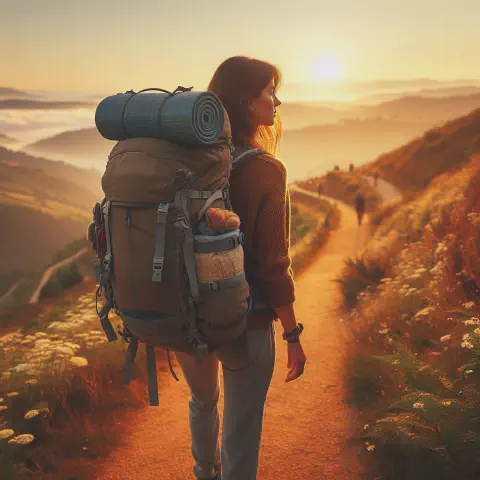
Part 3: Exploring the Heart of Cantabria – Santander to Gijón
The third section of the Camino del Norte takes you from Santander, the capital of Cantabria, to Gijón, the largest city of Asturias.
This is a challenging but rewarding coastal route that follows the rugged Cantabrian coastline, offering stunning views of wild beaches, cliffs and coves.
You will also walk through charming fishing villages, green pastures and forests, and enjoy the rich gastronomy and culture of these regions.
The total distance is about 220 km, which can be completed in 10 days, with an average of 22 km per day.
Camino del Norte Part 3 Route Map
Day 13 - Stage 13: Santander to Santillana del Mar (37 km)
This long stretch from Santander to the medieval town of Santillana del Mar is one of the most picturesque. Santillana del Mar, known as ‘the town of three lies’ (it’s neither holy, flat, nor by the sea), offers a step back in time with its cobblestone streets and historic buildings. Enjoy staying in one of the charming hotels or guesthouses in this quaint town.
Day 14 - Stage 14: Santillana del Mar to Comillas (23 km)
Journey from Santillana del Mar to Comillas, another gem of Cantabria. Comillas is renowned for its Modernista architecture, including Gaudí’s El Capricho. The town provides various accommodation options, including beachside hotels and local inns.
Day 15 - Stage 15: Comillas to Colombres (27 km)
The route to Colombres takes you through stunning coastal scenery and rural landscapes. Colombres, a small town in Asturias, is known for its Indiano architecture. Accommodations include traditional guesthouses and rural hotels.
Day 16 - Stage 16: Colombres to Llanes (23 km)
Llanes, a vibrant coastal town, is your next destination. It’s famous for its beaches, picturesque harbor, and the Picos de Europa mountain views. Llanes offers a variety of accommodations, from modern hotels to quaint guesthouses.
Day 17 - Stage 17: Llanes to Ribadesella (32 km)
The journey from Llanes to Ribadesella offers breathtaking views of the Asturian coast. Ribadesella, a beautiful seaside town, is famous for its prehistoric cave paintings at the Tito Bustillo Cave. The town has a range of accommodations, including beachfront hotels and cozy albergues.
Day 18 - Stage 19: Ribadesella to Colunga (20 km)
Travel through the Asturian countryside to Colunga, a town known for its dinosaur fossils. Enjoy the local museum and stay in one of the town’s charming hotels or guesthouses.
Day 19 - Stage 19: Colunga to Villaviciosa (18 km)
A shorter walking day to Villaviciosa, known for its cider production. Enjoy a glass of local cider and explore this quaint town. Accommodations include traditional inns and family-run hotels.
Day 20 - Stage 20: Villaviciosa to Gijón (29 km)
The final leg of this section takes you to the bustling city of Gijón. Known for its maritime heritage, vibrant cultural scene, and urban beaches, Gijón offers a perfect blend of city and sea. Choose from a wide array of accommodation options, ranging from luxury hotels to budget hostels.
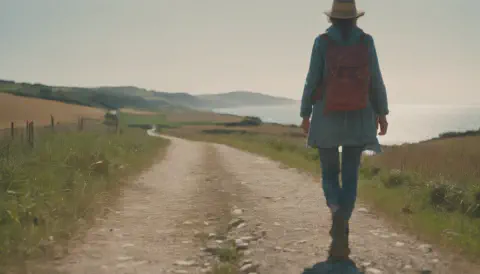
Part 4: The Asturian Coastline – From Gijón to Ribadeo:
The fourth section of the Camino del Norte takes you from Gijón to Ribadeo along the stunning Asturias coastline and into Galicia.
This section covers approximately156 kmand can be completed in 7 days. You will walk through picturesque fishing villages, bustling ports, sandy beaches, rocky cliffs, green hills and forests.
You will also enjoy the rich cultural and gastronomic heritage of this region, with its Celtic influences, Romanesque churches, prehistoric caves and delicious seafood.
This section is one of the most beautiful and rewarding of the del Norte, but also one of the most challenging, as it involves some steep ascents and descents and some long stages.
Camino del Norte Part 4 Route Map
Day 21 - Stage 21: Gijón to Avilés (24 km)
Leave Gijón and head towards Avilés, a city known for its rich history and modern art, including the Oscar Niemeyer International Cultural Centre. The walk is relatively easy, offering urban and countryside landscapes. Avilés has a range of accommodations, including boutique hotels and budget hostels.
Day 22 - Stage 22: Avilés to Soto de Luiña (38 km)
This challenging stretch takes you to Soto de Luiña, a quaint village situated in the Asturian hills. The path offers beautiful views and a serene environment. Soto de Luiña has several cozy guesthouses and rural accommodations.
Day 23 - Stage 23: Soto de Luiña to Cadavedo (23 km)
Continue through the rolling hills of Asturias to the small village of Cadavedo. Known for its scenic beauty and traditional Asturian architecture, Cadavedo offers a peaceful retreat. Stay in local inns or rural guesthouses.
Day 24 - Stage 24: Cadavedo to Luarca (16 km)
The journey to Luarca is shorter, leading to one of the most picturesque fishing villages on the Asturian coast. Luarca, with its white houses and bustling harbor, offers various accommodations, from charming guesthouses to comfortable hotels.
Day 25 - Stage 25: Luarca to Navia (21 km)
Travel from Luarca to Navia, a lively town with a rich maritime history. The route is a mix of coastal and inland scenery. In Navia, choose from a selection of hotels and guesthouses.
Day 26 - Stage 26: Navia to Ribadeo (31 km)
The final leg of this section takes you to Ribadeo, the gateway to Galicia. This stage offers a blend of coastal paths and green landscapes. Ribadeo is known for its historic center and proximity to the famous Playa de las Catedrales. The town offers a variety of accommodations, including luxury hotels and budget-friendly hostels.
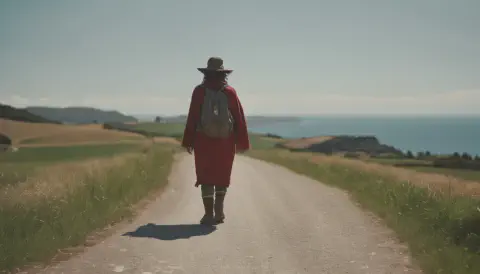
Part 5: The Galician Chapter – Ribadeo to Santiago de Compostela
The fifth section starts in Ribadeo, a coastal town in Galicia that marks the border with Asturias.
From here, the route follows the inland paths through green forests, rolling hills and rural villages, crossing several rivers and streams along the way.
The total distance of this section is about 190 km, which can be completed in 8 to 10 days depending on your pace.
The final destination is Santiago de Compostela, where you can claim your Compostela certificate and celebrate your achievement.
Camino del Norte Part 5 Route Map
Day 27 - Stage 27: Ribadeo to Lourenzá (28 km)
As you enter Galicia, the landscape shifts to lush greenery. Lourenzá, known for its magnificent monastery and the annual ‘Feria del Monástico’, offers a peaceful rest. Accommodations range from rural guesthouses to traditional inns.
Day 28 - Stage 28: Lourenzá to Abadín (25 km)
Travel through the serene Galician countryside to Abadín, a small town with a relaxing atmosphere. Enjoy the local hospitality in one of the family-run guesthouses or albergues.
Day 29 - Stage 29: Abadín to Vilalba (20 km)
The journey to Vilalba takes you through tranquil forests and fields. Vilalba is famous for its medieval tower and local cheese. Accommodations include charming hotels and rural guesthouses.
Day 30 - Stage 30: Vilalba to Baamonde (19 km)
A shorter walk leads to Baamonde, a village known for its artistic heritage and the 12th-century church. Stay in a traditional Galician ‘casa rural’ or a local albergue.
Day 31 - Stage 31: Baamonde to Sobrado dos Monxes (40 km)
This challenging stage brings you to Sobrado dos Monxes, famous for its Cistercian monastery. The town offers a unique experience with its historical and spiritual significance. Accommodations are limited but include a historic monastery and local guesthouses.
Day 32 - Stage 32: Sobrado dos Monxes to Arzúa (22 km)
From Sobrado dos Monxes, head to Arzúa, known for its creamy cheese and where the Camino del Norte meets the Camino Francés. Arzúa offers a variety of accommodations, including albergues, hotels, and rural houses.
Day 33 - Stage 33: Arzúa to O Pedrouzo (19 km)
Continue through the Galician countryside to O Pedrouzo, a small village with all the necessary amenities for pilgrims. Stay in one of the many albergues or guesthouses available.
Day 34 - Stage 234: Pedrouzo to Santiago de Compostela (20 km)
On the final day of your journey, walk to Santiago de Compostela, the end goal of your pilgrimage. Experience the joy and emotion of arriving at the Santiago Cathedral, a UNESCO World Heritage Site. Santiago offers a range of accommodations, from historic paradores to modern hostels, to suit all budgets and preferences.
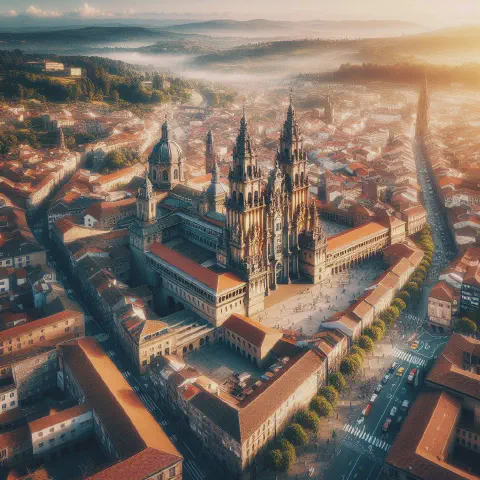
Camino del Norte Albergues
The Northern Way has so many albergues along the way that there is often a good choice, even in a single, small village.
Albergues can vary in price, comfort, facilities and hospitality, depending on their location and type. Some albergues can be reserved online in advance, while others are first-come, first-served.
A lot of Albergues are run by the local government or church, while others are privately owned or managed by volunteers, some establishments provide bedding and towels, while others require pilgrims to bring their own sleeping bag and mat.
Most albergues have a kitchen and a dining area, while others only have vending machines or a nearby bar and often, they have a curfew and a lock-out time, while others are more flexible and relaxed.
Some albergues have a friendly and communal atmosphere, while others are more impersonal and quiet. Here is a list of recommendations for each stage.
Accommodation by stage of the Camino del Norte
Along the way, you can find a variety of albergues and accommodations to rest and recharge. Albergues are hostels that offer dormitory-style rooms, shared bathrooms, and sometimes meals or kitchen facilities. They are usually run by volunteers or local associations and have a low cost.
Accommodations are hotels, guesthouses, or private rooms that offer more comfort and privacy, but also a higher price. Depending on your budget and preferences, you can choose the type of lodging that suits you best.
Here is a selection of recommended Albergues and hostels by Stage to get you started:
| Section | From | To | Accommodation | Description |
|---|---|---|---|---|
| 1 | Irun | San Sebastián | Albergue Juvenil Ondarreta La Sirena, Hotel Terminus | Affordable dormitory-style lodging at Ondarreta or slightly pricier but comfortable Hotel Terminus |
| 2 | San Sebastián | Zarautz | Albergue de Peregrinos de Zarautz, Hotel Alameda | Basic facilities at the pilgrim hostel or a more private stay at Hotel Alameda |
| 3 | Zarautz | Deba | Casa Rural Zelaieta BerriBi | Popular choice known for homely atmosphere and scenic views |
| 4 | Deba | Markina-Xemein | Albergue de Peregrinos de Markina, Hotel Kurutziaga | Traditional pilgrim hostel or cozy Hotel Kurutziaga |
| 5 | Markina-Xemein | Gernika | Albergue Juvenil Gernika, Hotel Gernika | Youth hostel with good facilities or a favored choice Hotel Gernika |
| 6 | Gernika | Lezama | Albergue de Peregrinos de Lezama | Limited but welcoming options in the small village of Lezama |
| 7 | Lezama | Bilbao | Albergue Bilbao Aterpetxea, Hotel Carlton | Range of options from budget-friendly to luxurious |
| 8 | Bilbao | Portugalete | Albergue de Peregrinos de Portugalete, Gran Hotel Puente Colgante | Traditional experience or multiple hotel options |
| 9 | Portugalete | Castro Urdiales | Hostal Catamaran, Hotel Las Rocas | Charming options or more upscale stay |
| 10 | Castro Urdiales | Laredo | Hostal El Carro, Casa de Marinos Hostel | Beachfront option or more secluded stay |
| 11 | Laredo | Güemes | Casa de la Abuela albergue | Famous albergue offering a unique stay |
| 12 | Güemes | Santander | Albergue de Peregrinos de Santander, Gran Hotel Sardinero | Diverse options ranging from economical to luxurious |
| 13 | Santander | Santillana del Mar | Parador de Santillana Gil Blas, Albergue Solar de Hidalgos | Luxurious stay in historic building or traditional pilgrim experience |
| 14 | Santillana del Mar | Comillas | Albergue de Peregrinos de Comillas, Hotel Comillas | Cozy pilgrim accommodation or more upscale stay |
| 15 | Comillas | Colombres | Casa Junco | Quaint accommodation with comfortable rooms and friendly atmosphere |
| 16 | Colombres | Llanes | Albergue La Estación, Hotel Don Paco | Popular choice among pilgrims or more comfortable option |
| 17 | Llanes | Ribadesella | Albergue de Peregrinos de Ribadesella, Hotel Villa Rosario | Budget option or luxurious beachside experience |
| 18 | Ribadesella | Colunga | Albergue de Peregrinos de Colunga, Hotel Mar del Sueve | Basic amenities or more refined stay |
| 19 | Colunga | Villaviciosa | Albergue de Peregrinos de Villaviciosa, Hotel Carlos I | Popular choice or charming accommodation |
| 20 | Villaviciosa | Gijón | Albergue de Peregrinos de Gijón, NH Gijón | Centrally located or elegant stay with sea views |
| 21 | Gijón | Avilés | Albergue de Peregrinos Pedro Solís, NH Collection Palacio de Avilés | Modern or stylish upscale stay |
| 22 | Avilés | Soto de Luiña | Albergue Casa Carmina, Hotel Casa Vieja del Sastre | Welcoming choice or charming accommodation |
| 23 | Soto de Luiña | Cadavedo | Albergue de Peregrinos de Cadavedo, Hotel Rural Casa Roja | Cozy pilgrim facilities or traditional stay |
| 24 | Cadavedo | Luarca | Albergue Villa de Luarca, Hotel Villa de Luarca | Friendly atmosphere or more private experience |
| 25 | Luarca | Navia | Albergue de Peregrinos de Navia, Hotel Blanco | Pilgrim accommodation or comfortable stay |
| 26 | Navia | Ribadeo | Albergue de Peregrinos de Ribadeo, Parador de Ribadeo | Budget or upscale stay with stunning views |
| 27 | Ribadeo | Lourenzá | Albergue de Peregrinos de Lourenzá, Hotel Rural Casa Xusto | Welcoming spot or charming accommodation |
| 28 | Lourenzá | Abadín | Albergue de Peregrinos de Abadín, Casa Goas | Basic pilgrim facilities or more comfortable stay |
| 29 | Abadín | Vilalba | Albergue de Peregrinos de Vilalba, Parador de Vilalba | Popular choice or medieval tower luxury |
| 30 | Vilalba | Baamonde | Albergue de Baamonde, Pension Palas | Pilgrims’ stay or nearby option |
| 31 | Baamonde | Sobrado dos Monxes | Albergue del Monasterio de Sobrado | Unique experience in historic monastery |
| 32 | Sobrado dos Monxes | Arzúa | Albergue de Peregrinos de Arzúa, Pensión Ribadiso | Pilgrim stay or comfortable accommodation |
| 33 | Arzúa | Pedrouzo | Albergue de Peregrinos de Pedrouzo, Pension Maribel | Typical pilgrim rest or homely atmosphere |
| 34 | Pedrouzo | Santiago de Compostela | Parador de Santiago – Hostal Reis Catolicos, Albergue de Peregrinos de Santiago | Iconic stay or traditional pilgrim’s rest |
Booking Accommodations and Logistics
- Advance Booking: Especially in smaller towns like Güemes, booking ahead is advised.
- Luggage Transfer Services: Available throughout the Camino, particularly helpful for long stretches like Santander to Santillana del Mar.
- Transport Options: Public buses and trains are useful for longer stages, such as the 37 km stretch from Santander to Santillana del Mar.
- Waymarking and Support: Each stage of the journey, from Irun to Santiago de Compostela, is well-marked and has access to emergency services and pharmacies.
Pilgrim Passport and Local Amenities
- Pilgrim Passport (Credencial): Essential for staying in pilgrim hostels and collecting stamps as a record of your journey.
- Local Amenities: Most towns, even smaller ones like Markina-Xemein or Lezama, offer basic amenities like grocery stores and pharmacies.
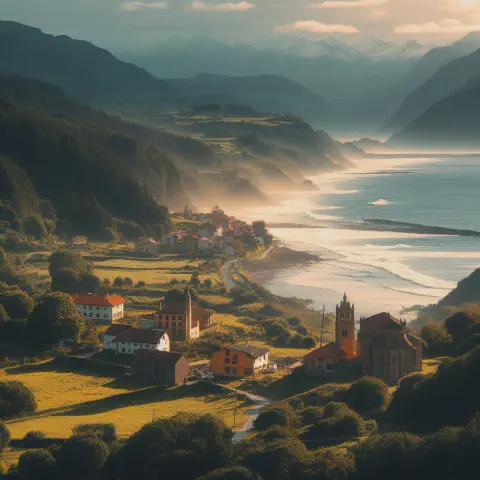
Camino del Norte: What is There to See and Do?
As one of the oldest and most diverse ways to walk the Camino de Santiago, along the way you can enjoy stunning views of the sea, mountains, and countryside, as well as visit historic towns, villages, and monuments. Some of the highlights of the Camino del Norte include:
- The Basque Country: This region is known for its unique culture, language, and cuisine. You can explore the cities of San Sebastián, Bilbao, and Santander, as well as admire the modern architecture of the Guggenheim Museum and the Vizcaya Bridge.
- The Cantabrian Coast: This area offers some of the most beautiful beaches and cliffs in Spain. You can relax on the sand, surf the waves, or hike along the rugged coastline. You can also discover the rich heritage of the Cantabrian people, who have preserved their traditions and folklore for centuries.
- The Asturian Mountains: This region is a paradise for nature lovers, with lush green valleys, forests, and lakes. You can walk through the Picos de Europa National Park, where you can see wildlife such as bears, wolves, and eagles. You can also taste the local delicacies, such as cider, cheese, and fabada (a bean stew).
- The Galician Countryside: This is the final stretch of the Camino del Norte, where you will enter the land of Celtic legends and myths. You can admire the Romanesque architecture of the cathedrals and monasteries, as well as the stone crosses and horreos (granaries) that dot the landscape. You can also savor the seafood and wine of Galicia, especially in Santiago de Compostela, where you will complete your journey.
Here is a table of cultural highlights of each stage and on which segment they are to be found. There is plenty to do and see along the route from Irun to Santiago de Compostela. The only constraint is the time you have available:
| Stage | Segment | Cultural Experiences and Attractions |
|---|---|---|
| 1 | Irun to San Sebastián | San Sebastián’s Old Town: Explore bars and cafes, try local pintxos.La Concha Beach: Ideal for strolls or a swim.Monte Urgull: Hike for city and bay views, visit Castillo de la Mota. |
| 2 | San Sebastián to Zarautz | Zarautz Surf Culture: Watch or learn surfing.Zarautz’s Historic Center: Wander old streets, visit Church of Santa María la Real. |
| 3 | Zarautz to Deba | Deba’s Coastal Views: Enjoy the scenery and historic center.Flysch Cliffs: Geological formations accessible by beach or boat. |
| 4 | Deba to Markina-Xemein | Markina-Xemein’s Basque Architecture: Discover traditional structures, visit Church of Santa María. |
| 5 | Markina-Xemein to Gernika | Gernika’s Peace Museum: Learn about Basque history.The Assembly House and Tree of Gernika: Symbols of Basque freedoms. |
| 6 | Gernika to Lezama | Lezama’s Rural Landscape: Enjoy natural beauty and tranquility. |
| 7 | Lezama to Bilbao | Guggenheim Museum: Modern architecture, contemporary art.Bilbao’s Old Town (Casco Viejo): Historic buildings, shops, pintxos bars. |
| 8 | Bilbao to Portugalete | Vizcaya Bridge: UNESCO World Heritage site, engineering marvel. |
| 9 | Portugalete to Castro Urdiales | Castro Urdiales’s Gothic Church: Visit Church of Santa María de la Asunción.Harbor Area: Lively atmosphere, fresh seafood. |
| 10 | Castro Urdiales to Laredo | Laredo’s Old Town: Explore historic streets and buildings.Laredo Beach: Long beach, ideal for walks. |
| 11 | Laredo to Güemes | Güemes’s Scenic Beauty: Enjoy rural landscapes and tranquility. |
| 12 | Güemes to Santander | Magdalena Palace, Santander: Historic royal palace with gardens.Santander’s Beaches: Beautiful sandy beaches like El Sardinero. |
| 13 | Santander to Santillana del Mar | Santillana del Mar’s Historic Center: Medieval streets, unique history. |
| 14 | Santillana del Mar to Comillas | Gaudí’s El Capricho, Comillas: Colorful building by Antoni Gaudí. |
| 15 | Comillas to Colombres | Colombres’s Indiano Architecture: Architecture from Spaniards who returned from the Americas. |
| 16 | Colombres to Llanes | Llanes’s Historic Port: Colorful port and old town. |
| 17 | Llanes to Ribadesella | Tito Bustillo Cave, Ribadesella: Prehistoric cave paintings. |
| 18 | Ribadesella to Colunga | Jurassic Museum of Asturias, Colunga: Dinosaur exhibits, prehistoric history. |
| 19 | Colunga to Villaviciosa | Villaviciosa’s Cider Houses: Taste local Asturian cider. |
| 20 | Villaviciosa to Gijón | Gijón’s Roman Baths: Ancient Roman history.Cimavilla: Old fishermen’s quarter, traditional Asturian bars. |
| 21 | Gijón to Avilés | Oscar Niemeyer International Cultural Centre: Modern architecture, cultural events.Avilés Old Town: Historic streets, Church of Santo Tomás de Canterbury. |
| 22 | Avilés to Soto de Luiña | Rural Asturias: Picturesque landscapes, traditional villages. |
| 23 | Soto de Luiña to Cadavedo | Asturian Coastline: Views of the rugged coastline and Bay of Biscay. |
| 24 | Cadavedo to Luarca | Luarca’s White Houses and Harbor: Picturesque fishing village. |
| 25 | Luarca to Navia | Navia’s Maritime Heritage: Maritime history, local seafood. |
| 26 | Navia to Ribadeo | Playa de las Catedrales, Ribadeo: Natural arches and caves, best at low tide. |
| 27 | Ribadeo to Lourenzá | Lourenzá’s Monastery of San Salvador: Historical and architectural gem. |
| 28 | Lourenzá to Abadín | Galician Countryside: Natural beauty of Galician landscapes. |
| 29 | Abadín to Vilalba | Vilalba’s Tower: Part of a medieval castle, town symbol. |
| 30 | Vilalba to Baamonde | Baamonde’s Artistic Heritage: Church sculptures by a Galician artist. |
| 31 | Baamonde to Sobrado dos Monxes | Monastery of Santa María de Sobrado: Historical significance, stunning architecture. |
| 32 | Sobrado dos Monxes to Arzúa | Arzúa’s Cheese Tasting: Local cheese indulgence. |
| 33 | Arzúa to Pedrouzo | Rural Galicia: Scenic beauty, traditional farms, eucalyptus forests. |
| 34 | Pedrouzo to Santiago de Compostela | Santiago de Compostela Cathedral: Romanesque, Gothic, Baroque architecture.Praza do Obradoiro: Main square, historic surroundings.Museum of Pilgrimage and Santiago: History and significance of the Camino de Santiago. |
Cultural Highlights of the Camino del Norte
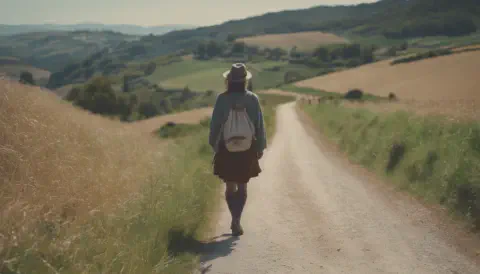
Physical and Mental Challenges on the Camino del Norte
Embarking on the del Norte is a journey of endurance, resilience, and self-discovery. The route, with its varied terrain, changing weather conditions, and the sheer physical exertion required, presents numerous challenges to pilgrims. However, with preparation, awareness, and a balanced approach, these challenges can be met and overcome, adding to the profound sense of achievement upon reaching Santiago de Compostela.
Is The Camino del Norte Difficult?
Make no mistake, Northern Way is one of the most difficult Camino de Santiago routes! Much of the Atlantic coast from Irún to Santiago de Compostela, covering over 800 km, is very hilly and sometimes mountainous.
The route has many ascents and descents, some of them steep and challenging, and some long walking days. Compared to the Camino Francés, the most popular route, the Camino del Norte has less facilities, less pilgrims, and less waymarking.
However, it also offers stunning scenery, great food, and a rich cultural heritage. The Camino del Norte is not for beginners or those who are looking for an easy walk.
It requires good physical condition, proper preparation, and a strong motivation. But for those who are willing to take on the challenge, it is a rewarding and unforgettable experience.
What is the hardest part of the Camino Norte?
The Northern Way has many challenges, such as steep hills, rocky paths, changing weather, and long distances between towns.
Some of the most difficult sections are in the Basque Country, where the terrain is mountainous and the route often goes inland and back to the coast.
The hardest part is probably the first section from Irún to Bilbao, which has many ups and downs and some long ascents and descents. This section is also the second longest on the Camino de Santiago and the second most difficult pilgrimage route . The difficulty level of this section is rated as challenging by several sources.
Managing Physical Strain
- Preparation: Begin training several months in advance with regular walks, gradually increasing the distance and including varied terrain.
- Stretching and Rest: Incorporate stretching into your daily routine, focusing on legs, back, and shoulders. Regular breaks during the day’s walk and adequate rest at night are crucial.
- Nutrition and Hydration: Maintain a balanced diet rich in carbohydrates and proteins. Stay hydrated, especially during hot days, and consider electrolyte supplements if sweating excessively.
Strategies for Mental Resilience
- Mindfulness: Practice mindfulness and breathing exercises to stay present and reduce stress. This helps in appreciating the journey and managing challenging moments.
- Positive Mindset: Cultivate a positive mindset. Remember, the Camino is as much about the journey as the destination. Embrace unexpected changes and challenges as part of the experience.
- Emotional Well-being: Stay connected with fellow pilgrims for support. Sharing experiences and challenges can be uplifting and provide a sense of community.
Inspirational Stories of Resilience
Many pilgrims have faced and overcome significant challenges on the Camino. Stories abound of individuals who started the journey with physical limitations or personal hardships but found strength and resilience they didn’t know they had. These stories serve as a testament to the human spirit’s ability to adapt and persevere.
Listening to Your Body
- Self-awareness: Be attuned to your body’s signals. If you feel pain or excessive fatigue, don’t hesitate to take a shorter walking day or a rest day.
- Rest Days: Plan for rest days in your Camino itinerary, especially in towns or cities where you can relax and enjoy some local culture. These breaks are essential for physical recovery and mental rejuvenation.
The physical and mental challenges of the Camino are significant, but they are also an integral part of the journey’s transformative power. By preparing adequately, maintaining a balanced approach to physical and mental health, and staying open to the lessons the journey offers, pilgrims can embrace these challenges as opportunities for growth and self-discovery. Remember, the Camino is not a race; it’s a personal journey, unique to every pilgrim who walks it.
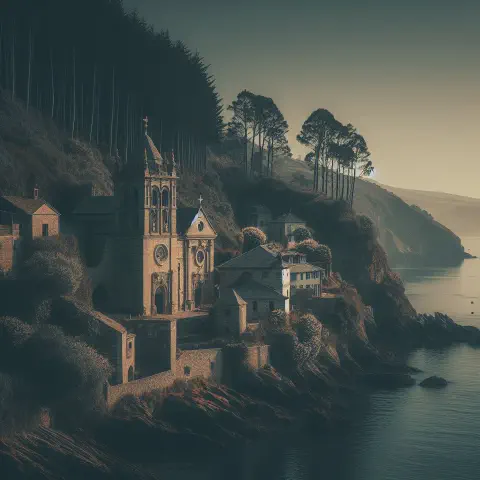
Personal Transformation and Spiritual Growth
The Camino del Norte offers a pathway to personal transformation and spiritual growth. As pilgrims traverse the varied landscapes of northern Spain, they embark on a deeper journey within, often emerging with new insights, perspectives, and a renewed sense of self.
Journey of Self-Discovery
- Solitude and Reflection: The quieter routes of the del Norte provide ample opportunity for solitude, allowing pilgrims to engage in introspection and self-reflection.
- Nature’s Influence: The natural beauty of the route, from the rugged coastlines to the serene countryside, often inspires a deeper connection with nature, fostering a sense of peace and grounding.
Spiritual Growth
- Historical and Religious Sites: Visiting ancient churches, monasteries, and sacred sites along the way can offer a sense of connection to the spiritual history of the Camino.
- Cultural Rituals: Participating in local religious and cultural rituals can deepen the spiritual experience, allowing pilgrims to immerse themselves in the faith and tradition that the Camino embodies.
Personal Testimonies
- Transformative Experiences: Many pilgrims share stories of profound personal growth, from overcoming life challenges to finding clarity and purpose. These narratives highlight the transformative power of the Camino.
- Community and Connection: The camaraderie and sense of community among pilgrims often lead to lasting friendships and a deeper understanding of shared humanity.
New Perspectives and Meaning
- Life Lessons: The challenges and experiences of the Camino often translate into valuable life lessons, such as resilience, patience, and gratitude.
- Renewed Outlook: Upon completion, many pilgrims report a renewed outlook on life, feeling more connected to their inner self and the world around them.
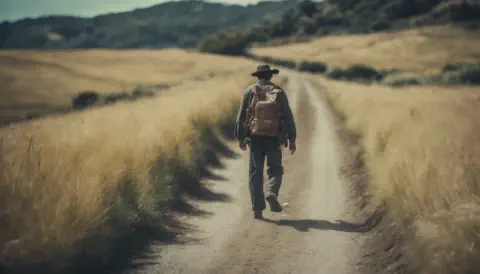
In Conclusion
The Camino del Norte is a challenging but rewarding pilgrimage route that follows the northern coast of Spain from Irún to Santiago de Compostela. Along the way, you will encounter stunning scenery, rich culture, delicious cuisine and friendly locals. You will also experience a sense of accomplishment and spiritual growth as you walk in the footsteps of thousands of pilgrims who have done the same journey for centuries.
Your personal itinerary can vary depending on your preferences, budget and time. However, a typical Camino del Norte itinerary would take about 35 days to complete the whole route, covering an average of 25 km per day. You can also choose to do shorter sections of the route, such as the Basque Country, Cantabria, Asturias or Galicia. Each section has its own charm and highlights, such as the Guggenheim Museum in Bilbao, the Picos de Europa National Park, the Covadonga Sanctuary or the Cathedral of Santiago.
This is not an easy walk, as it involves some steep ascents and descents, rocky paths and variable weather conditions. You will need to be physically fit and well-prepared to enjoy this adventure. You will also need to book your accommodation in advance, especially in high season, as there are fewer options than on other Camino routes.
However, you will find that this Camino offers a more authentic and less crowded experience than other routes, as well as a chance to discover the diversity and beauty of northern Spain.

